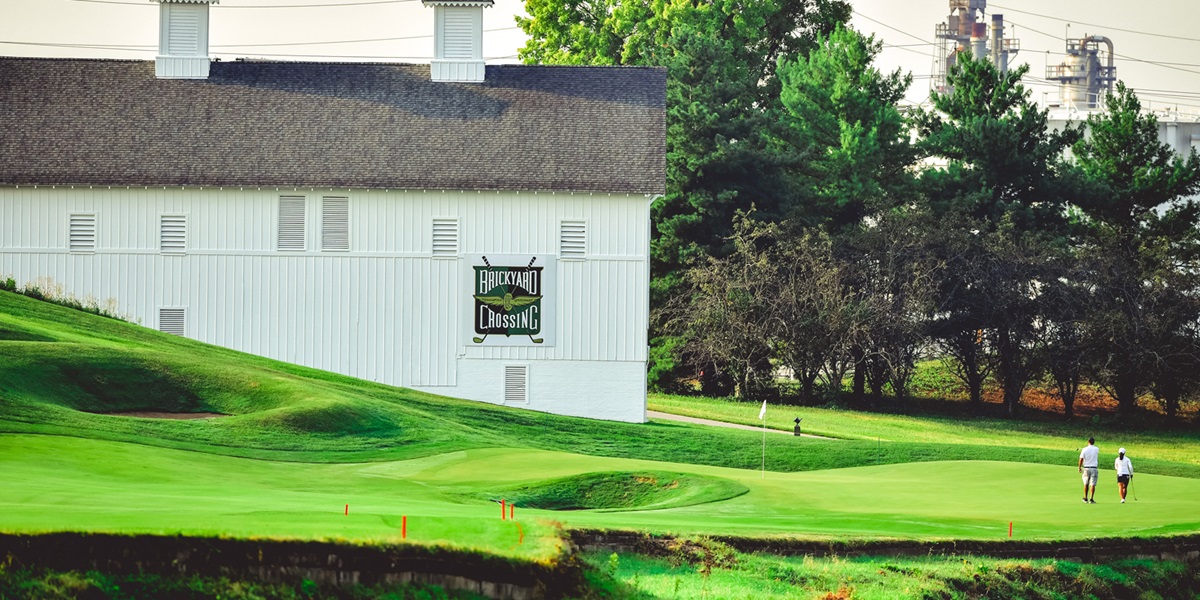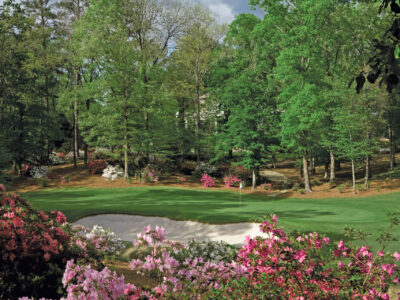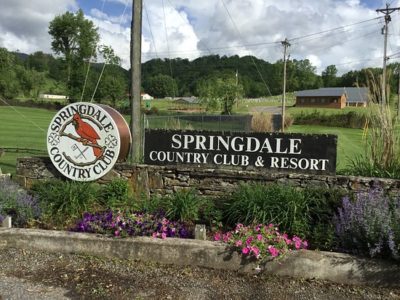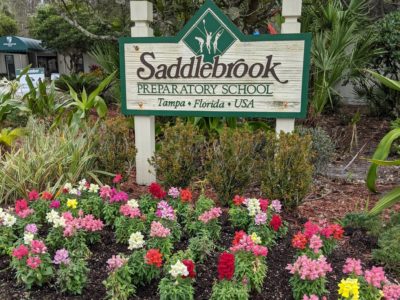By Mike May
The late hall-of-fame golf course architect, Pete Dye was the Donald Ross of his generation. Dye’s footprint on U.S. golf is prolific and some of his best designs can be found in Indiana.
Jack Nicklaus, himself a world-renowned golf course architect, was a fan of Dye’s creative genius, 
“I think Pete Dye was the most creative, imaginative, and unconventional golf course designer that I have ever been around.”
While Dye’s most publicized project was the Stadium Course at the TPC Sawgrass, the roots of his golf designs can be found in Indiana. Dye’s first 18-hole creation was the Maple Creek Golf and Country Club, which opened in 1961 in Indianapolis.
The Pete Dye Trail was formed to honor his courses and includes; The Pete Dye Course at French Lick, Brickyard Crossing, The Fort, Maple Creek, Tippecanoe, as well as, the Ackerman-Alan and Kampen courses at the Birck Boilermaker Golf Complex.
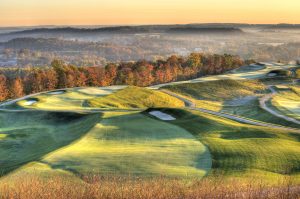
Pete Dye Design and Chris Lutzke of A&L LLC Builder 18 Hole Resort course PGA event to be held after opening
THE PETE DYE COURSE at French Lick
The Pete Dye Course at French Lick was built atop of the second highest peak in Indiana. Many adjectives, breathtaking, dramatic and exciting, can be used to describe it.
The course provides a 360-degree view of the surrounding Hoosier National Forest. From many parts of this golf course, you can see 30-40 miles in every direction. Dye wanted to give golfers a panoramic view of southern Indiana.
“As I built the golf course, I tried to get the tees, the fairways, and the greens in position that they have these long views over the valleys and hills,” stated Dye. “The ambience of the course is the look, the vistas from all the different tees, greens and fairways.”
BRICKYARD CROSSING
Brickyard Crossing is a blend of golf and motor sports, as the routing of the course runs both inside and outside the famous Indianapolis Motor Speedway.
Brickyard Crossing has 14 holes situated on the outskirts of the Speedway and four holes within the infield of the Racing Capital of the World. To reach those four infield holes, you drive through a tunnel, under the track.
The Speedway’s grandstands are always lurking in the background, but they never impact play.
THE FORT (Indianapolis)
The Fort is considered one of the finest public golf courses in Indiana. 
“The Fort is a very enjoyable golf course and very secluded, yet only 25 minutes from downtown Indianapolis,” said John Swan, head golf professional at The Fort. “Our course is surrounded by the Fort Benjamin Harrison State Park, so there are no residential homes on the course.”
Originally called the Fort Harrison Officers Club and Golf Course, the course was re-designed by Dye and his associate Tim Liddy in 1998 and re-named The Fort.
MAPLE CREEK
The Maple Creek Golf and Country Club, originally opened as Heather Hills in 1961. It is an 18-hole layout created by both Pete and his wife, Alice. Maple Creek features small tees and greens, who’s narrow fairways are tree-lined and feture natural long grass areas.
Maple Creek is, “A shot maker’s course that cannot be overpowered.”
TIPPECANOE
The Tippecanoe Country Club is one of the oldest and most treasured attractions in northern Indiana. It opened with nine holes in 1920 and was originally designed by Roy Robertson.
A young Pete Dye was hired to add nine holes for a renovation project in 1963. Upon completion, Dye not only added the back nine, but he also re-designed portions of the front nine to make it one of the bet courses in the state.
“Our golf course features a few risk-and-reward holes, a number of old trees, and is a well-designed layout by Pete Dye. It’s just a beautiful golf course,” stated head golf professional John Alexander.
BIRCK BOILERMAKER GOLF COMPLEX (West Lafayette)
The Purdue University golf teams play and practice on two nationally respected golf courses, Ackerman-Allen and Kampen, both located at the Birck Boilermaker Golf.
“It’s not often that you get to play golf at a university and play two of the best courses in Indiana. Not only that, but the two are Pete Dye-designed courses,” said head golf professional Daniel Ross. “Ackerman-Allen is a parkland-style course. Kampen is a links style.”
The Ackerman-Allen Course was originally designed by Bill Diddle and opened for play in 1934. Dye was commissioned to redesigned it in 2015.
“Pete Dye took an already good golf course (Ackerman-Allen) and turned it into an incredibly fun and truly enjoyable golf course,” added Ross.
The Kampen redesign efforts began in 1996 with two main goals. To build a course that would challenge the top collegiate golfers and create an atmosphere of learning for Purdue’s students.
The redesign included efforts from 32 Purdue students and one of the main projects was to build a water reclamation plant. All the water used on Kampen is recycled.
“As a person who calls Indiana home, I am very pleased to have had the opportunity to build two of the finest university golf courses in the country at Purdue,” said Dye.
Both courses have hosted the NCAA (golf) Championships and Kampen has a natural celery bog.
Pete Dye’s incredible golf creations live on in Indiana on the Pete Dye Golf Trail.

